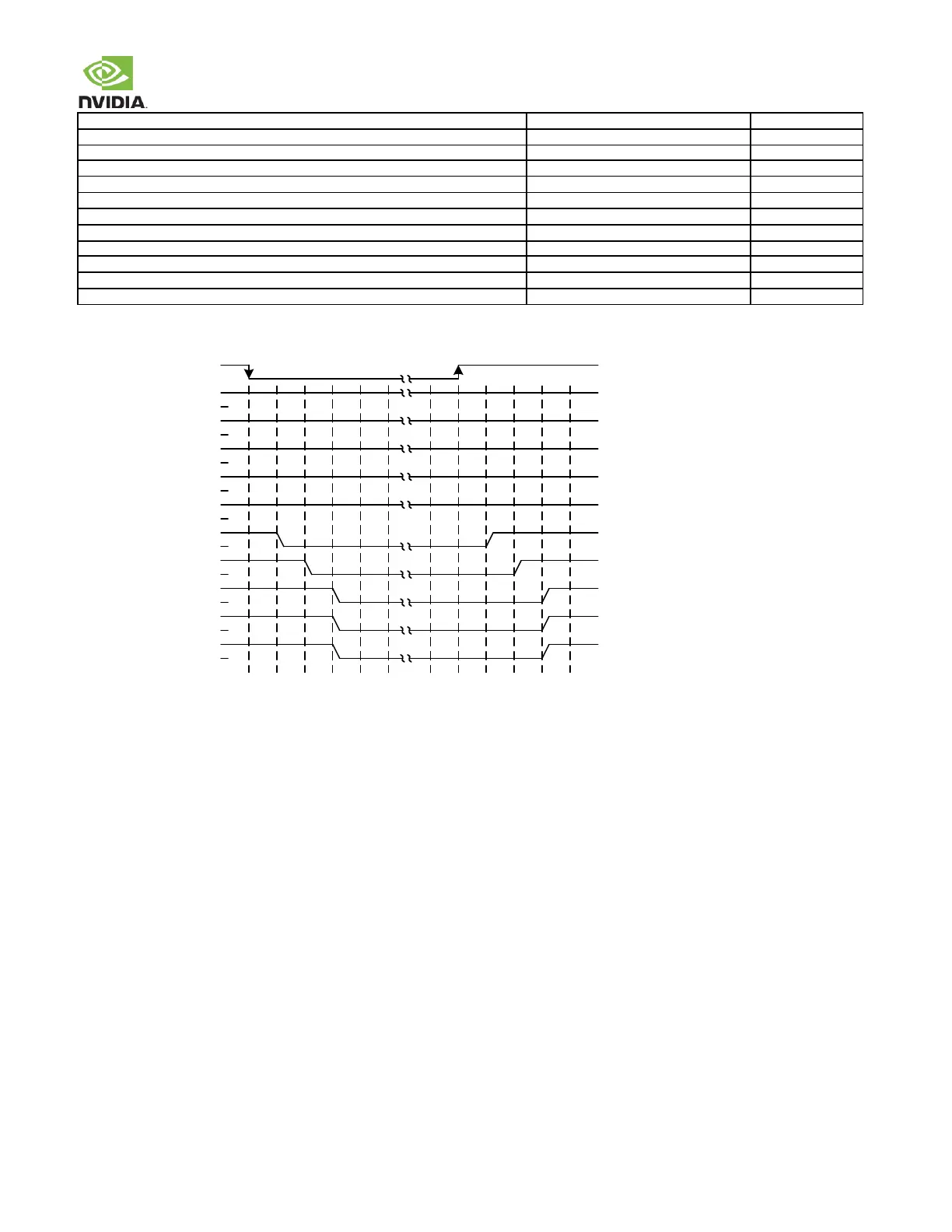3.8 Optional Auto-Power-On Support
Jetson TX2 and Jetson TX2i both optionally support Auto-Pow er-On. This allow s the platform to pow er on w hen VDD_IN is first
powered, instead of w aiting for a pow er button press. For Jetson TX2, to enable this feature, the CHARGER_PRSNT# pin
should be tied to GND. For Jetson TX2i, which uses a different PMIC, the POWER_BTN# pin needs to be held high. As there
is a pull-up on the module, the POWER_BTN# pin can be left floating on the carrier board. If a design w ill support both Jetson
TX2 and Jetson TX2i and needs to power on w ithout a button press (Auto-Pow er-On), the CHARGER_PRSNT# pin should be
tied to GND, and the POWER_BTN# pin should be left unconnected.
3.8.1 Jetson TX2 Auto-Power-On Details
This section provides guidance for modifying a carrier board design to power the platform on w hen VDD_IN is first pow ered,
instead of w aiting for a power button press. In order to pow er the system on w ithout a pow er button, a specific sequence is
required betw een the time the VDD_IN pow er is connected and the CHARGER_PRSNT# pin on the module is driven low . The
CHARGER_PRSNT# pin connects to the module PMIC and requires a minimum delay of 300ms from the point VDD_IN reaches
its minimum level (5.5V) before it can be driven low . Jetson TX2/TX2i includes circuitry on the module to support Auto-Pow er-
On. In order to enable this feature, the CHARGER_PRSNT# pin should be tied to GND.
